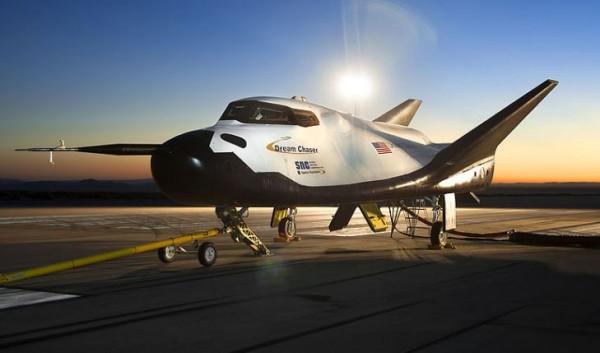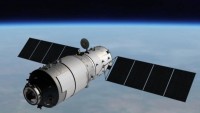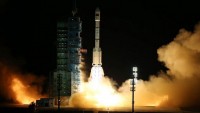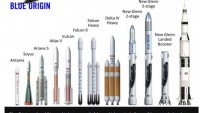United Nations to Fly Developing Nations into Space
| Arthur Dominic Villasanta | | Sep 29, 2016 04:28 AM EDT |
(Photo : SNC) Dream Chaser
The United Nations will launch its first space mission on a privately funded spacecraft in 2021 and will take along for the ride developing nations that can't afford to get into space on their own.
The ultimate goal of the UN space mission is to make space -- a valuable environment for science experiments -- more affordable to nations that might not otherwise have access to it.
Like Us on Facebook
"The possibilities are endless," said Simonetta Di Pippo, director of the United Nations Office of Outer Space Affairs (UNOOSA).
UNOOSA is now accepting proposals "on anything from developing materials that resist corrosion in space to studying climate change and food security."
Developing countries get first crack at the UN space mission, but the mission is open to all UN member states. Payloads will be selected by UNOOSA in 2018 and will be launched into low Earth orbit or LEO (up to about 1,200 miles above Earth) in 2021.
UNOOSA and Sierra Nevada Corporation (SNC) announced details of the first-ever UN space mission at the International Astronautical Congress in Guadalajara, Mexico. The dedicated Dream Chaser Mission will provide developing countries the opportunity to develop and fly microgravity payloads for an extended duration in orbit.
This announcement builds on the Memorandum of Understanding (MOU) signed in June 2016 between UNOOSA and SNC to collaborate on this historic United Nations space mission.
The first-ever United Nations space mission is intended to launch in 2021 and will allow United Nations Member States to participate in a 14-day flight to LEO on SNC's Dream Chaser spacecraft.
"One of UNOOSA's core responsibilities is to promote international cooperation in the peaceful use of outer space," said Di Pippo.
"I am proud to say that one of the ways UNOOSA will achieve this, in cooperation with our partner SNC, is by dedicating an entire microgravity mission to United Nations Member States, many of which do not have the infrastructure or financial backing to have a standalone space program."
Di Pippo said funding of the mission will come from multiple sources.
"We will continue to work closely with SNC to define the parameters of this mission which, in turn, will provide United Nations Member States with the ability to access space in a cost-effective and collaborative manner within a few short years."
Countries selected to provide mission payloads will be asked to pay a pro-rated portion of the mission cost, based on the resources required to host the payload and their ability to pay. In addition, major sponsors are being sought to finance a large portion of the mission costs.
Payloads will be selected in early 2018 to allow time for development and integration into the Dream Chaser spacecraft for launch expected in 2021.
SNC says its Dream Chaser is the only reusable, lifting-body, multi-mission-spacecraft capable of landing at commercial airports or spaceports able to accommodate large commercial aircraft -- anywhere in the world.
TagsUnited Nations, Space, United Nations Office of Outer Space Affairs, Sierra Nevada Corporation, Dream Chaser, Simonetta Di Pippo
©2015 Chinatopix All rights reserved. Do not reproduce without permission
EDITOR'S PICKS
-

Did the Trump administration just announce plans for a trade war with ‘hostile’ China and Russia?
-

US Senate passes Taiwan travel bill slammed by China
-

As Yan Sihong’s family grieves, here are other Chinese students who went missing abroad. Some have never been found
-

Beijing blasts Western critics who ‘smear China’ with the term sharp power
-

China Envoy Seeks to Defuse Tensions With U.S. as a Trade War Brews
-

Singapore's Deputy PM Provides Bitcoin Vote of Confidence Amid China's Blanket Bans
-

China warns investors over risks in overseas virtual currency trading
-

Chinese government most trustworthy: survey
-

Kashima Antlers On Course For Back-To-Back Titles
MOST POPULAR
LATEST NEWS
Zhou Yongkang: China's Former Security Chief Sentenced to Life in Prison

China's former Chief of the Ministry of Public Security, Zhou Yongkang, has been given a life sentence after he was found guilty of abusing his office, bribery and deliberately ... Full Article
TRENDING STORY

China Pork Prices Expected to Stabilize As The Supplies Recover

Elephone P9000 Smartphone is now on Sale on Amazon India

There's a Big Chance Cliffhangers Won't Still Be Resolved When Grey's Anatomy Season 13 Returns

Supreme Court Ruled on Samsung vs Apple Dispute for Patent Infringement

Microsoft Surface Pro 5 Rumors and Release Date: What is the Latest?














